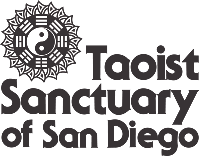Jan Silberstorff is with us this weekend. Jan is a brilliant scholar of Chinese martial history and the art of taijiquan, and brings a rare quality and thoughtfulness to his teachings. Our seminar is focused on the principles of Chen style taijiquan, using the “road map” of the Taiji diagram to explain the movement patterns
Part of our discussion revolved around the evolution of both the art of taijiquan and the methods of teaching, The taijiquan of today is becoming different than that of the previous generations, and contemporary teachers are advancing their own style and purpose for their practice, which greatly impacts what they pass on to the next generations. This evolution is normal, but it is critical that the essence of the art not be left out of this evolution. if the original principles are not fully understood, followed and taught, there is risk that the future taijiquan will no longer be the original art of the creators and ancestors.
How can we, as current teachers and students, prevent this loss?
Wu de, or martial virtue, describes the relationship between a teacher and student. Sometimes it’s mistakenly interpreted as how the student should serve the teacher. This would be seen with the student who helps prepare the school for classes and makes sure the teacher’s teacup is always full.
Actually, wu de is better understood as a way to preserve the principles of taijiquan. In order to pass on the teachings of the art, there must be a strong and long lasting relationship between teacher and student. The student needs to be taught the art as a whole entity, and time is needed to integrate the principles and develop the skill so that the student can later pass on the art to their own students. The relationship should not be about how the student treats the teacher, but instead should be about respecting the principles and tenets of the Chen family art of taijiquan, and committing to a relationship that will foster the understanding and seeding of the art.
Wu de is not about serving the teacher, but rather is about the preservation of the art itself. Teachers who wish to nourish an atmosphere of Wu de in their school should take note of the bigger picture. The art of Chen style taijiquan is precious, and we must all take care that it is not lost.

